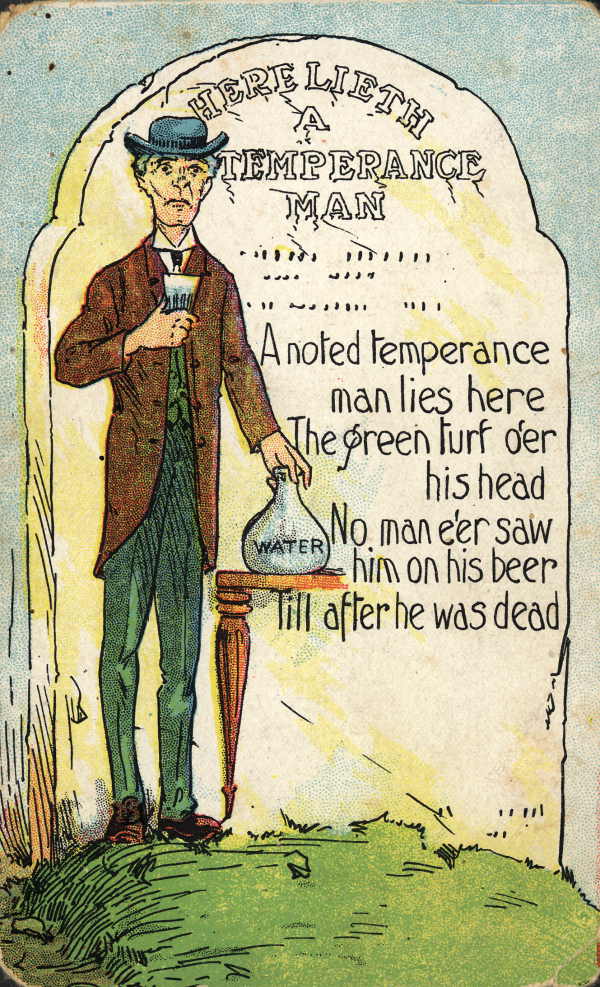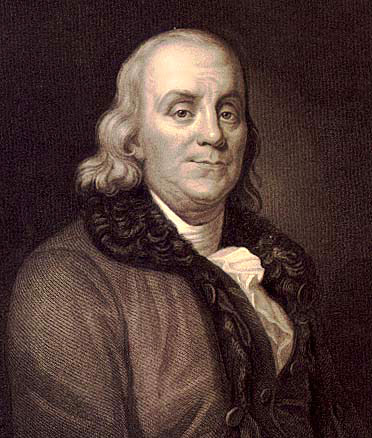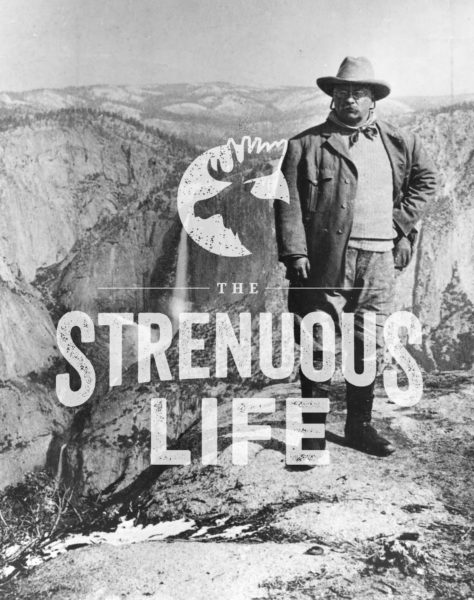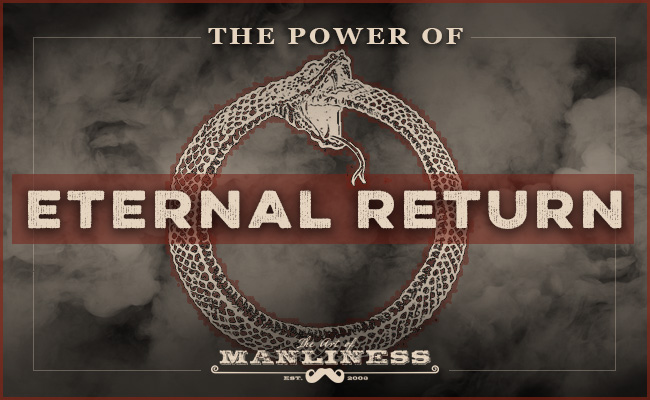
Editor’s Note: This is a guest article from Kyle Eschenroeder.
We’ve once more rolled into the time of year where many of us make resolutions for how to live better in the months to come.
Most of these resolutions concern very concrete, practical parts of life: losing weight, exercising more, wasting less time, getting organized. Worthy resolutions all.
But the philosopher Friedrich Nietzsche once gave himself a different kind of resolution — one that was both epically sweeping, and yet had the potential to tangibly transform every single area of his life:
“For the New Year . . . everyone takes the liberty of expressing his wish and his favorite thought: well, I also mean to tell what I have wished for myself today, and what thought first crossed my mind this year,—a thought which ought to be the basis, the pledge and the sweetening of all my future life! I want more and more to perceive the necessary characters in things as the beautiful:—I shall thus be one of those who beautify things. Amor fati: let that henceforth be my love! I do not want to wage war with the ugly. I do not want to accuse, I do not want even to accuse the accusers. Looking aside, let that be my sole negation! And all in all, to sum up: I wish to be at any time hereafter only a yea-sayer!”
Nietzsche resolved to amor fati — to love his fate. He wanted to say yes to life.
Amor fati was in fact not just a one-time new year’s resolution for Friedrich Nietzsche, but central to his whole philosophy:
“My formula for human greatness is amor fati: that one wants to have nothing different, not forward, not backward, not in all eternity. Not merely to bear the necessary, still less to conceal it. . . . but to love it.”
While Nietzsche’s resolve to amor fati was rather broad and immense in scope, he fortunately had a very specific tool to help him achieve his goal: the idea of eternal return.
If saying yes to life is a resolution you’d also like to make this year, then this tool — this radically perspective-altering prism — will prove invaluable to you as well.
The Eternal Return
“What, if some day or night a demon were to steal after you into your loneliest loneliness and say to you: ‘This life as you now live it and have lived it, you will have to live once more and innumerable times more; and there will be nothing new in it, but every pain and every joy and every thought and sigh and everything unutterably small or great in your life will have to return to you, all in the same succession and sequence—even this spider and this moonlight between the trees, and even this moment and I myself. The eternal hourglass of existence is turned upside down again and again, and you with it, speck of dust!'” –Friedrich Nietzsche, The Gay Science
How would you live if you were to repeat this life, as it is lived this time, over and over again for eternity?
Nothing changes. You couldn’t make different decisions or take on different attitudes. You wouldn’t be conscious that you’re reliving your life.
This life. As it is. Again and again.
This is the idea of eternal return or recurrence.
It turns memento mori — meditating on your death — on its head while offering a path to amor fati — to loving one’s fate.
It’s an ancient idea and a stirring thought experiment; while Nietzsche and others have done serious work to try and prove that eternal recurrence is literally true, for our purposes, all we need to consider is: What if?
What if death is not an escape hatch? What if you are sentenced to life, not death? To this life in particular. The only one you know.
The more you consider this idea, the more potent it becomes.
Were eternal return to be true, we’d start to take more responsibility for our life, and treat every decision more seriously, because we’d be stuck with the consequences for eternity. As Nietzsche observes, were the idea of eternal return true, “The question in each and every thing, ‘Do you desire this once more and innumerable times more?’ would lie upon your actions as the greatest weight.”
As Nietzsche further observes, the weight that accompanies the idea of eternal return is truly a double-edged sword:
“Would you not throw yourself down and gnash your teeth and curse the demon who spoke thus? Or have you once experienced a tremendous moment when you would have answered him: ‘You are a god and never have I heard anything more divine.’ If this thought gained possession of you, it would change you as you are or perhaps crush you.”
Indeed, on the one hand, the idea of eternal return can be wildly terrifying.
Putting our life to this test is intensely uncomfortable. The idea of death or Heaven/Hell suggest we move on, leaving all or many of our decisions behind; we may be destined to an infinite reward or punishment, but either way, there is a change to something new. In the case of eternal return, however, we are fated to experience all our choices again and again — not just in memory but in living reality. Whatever mistakes you’ve made in the past, you’ll repeat on an endless, infinite loop. Knowing this, you may feel as if you’ve already spent too much of your life living in a way that would be unbearable to experience all over again. You may even feel as if you ought to just “throw yourself down and gnash your teeth.”
Yet the anguish that the idea of eternal return can generate about the past is matched by the incisive inspiration it can lend to the present and the future.
If you stay with your past regret, you’ll break through. You’ll realize that every moment spent in remorse is another regretful moment for eternity. You’ll finally understand, in your bones, the truth of Nietzsche’s wise advice: “Never yield to remorse, but at once tell yourself: remorse would simply mean adding to the first act of stupidity a second.”
If you’ve lived 70% of your life in a way you wouldn’t want to revisit, the importance of doing something differently for the remaining 30% becomes obvious. Would you want to spend an eternity regretting a previous eternity?
Eternal return then shifts your focus to the present and future — to the challenge of shaping the rest of our lives into ones we’d want to live again and again.
Eternal recurrence demands that we repeatedly answer the big, tough question of How to live? Not in an academic sense, though. The question becomes urgent, immediate, and eminently practical. We find we must rely on ourselves in the moment to make the call, and the weight of eternal recurrence helps to bring out the best in us — the best we’re capable of at the time.
The steep cost of deliberation becomes obvious and we become less patient with minor arguments about things that don’t really matter. If eternal recurrence were true, the right thing to do becomes more apparent, as does the need to take action on it. As I meditate more and more on eternal return, I continuously find myself heartily agreeing with the Stoic emperor Marcus Aurelius when he said, “Waste no more time arguing about what a good man should be. Be one.”
Our transformed present also radically shifts our future. If we are to live this life not once, but an infinite amount of times, we’ll want to take care in choosing our aims. At the same time, we’ll be more motivated to stay true to them, and less likely to forget what’s really important when our ego begins to tempt us away. Eternal return doesn’t dictate a set of ideals to hold; instead, it keeps us closer to the ones we choose for ourselves.
When life is looked at through the prism of eternal return, rather than being ephemeral, fleeting nothings, each moment becomes an immortal brick in the groundwork of your existence. Each moment not only shapes the future, but the present moment for infinite future selves.
Eternal recurrence challenges us to inch closer to amor fati — to truly loving our fate. If you had to do this again and again, wouldn’t you look harder for a way to love it?
Posture, Path, Purpose
“how well disposed would you have to become to yourself and to life to crave nothing more fervently than this ultimate eternal confirmation and seal?” –Friedrich Nietzsche
There are two ways we shape our lives: our posture and our path. Our path is made up of our decisions, aims, priorities, and, ultimately, our actions. Our path is the where and what. Our posture is our perspective, attitude, and level of engagement. Our posture is how we walk our path. Adjusting our path is external while adjusting our posture is internal.
There is, in the scenario of eternal recurrence, no changing of past paths or postures, so we may have already set ourselves up for years of torture. This is terrifying. Not only do you have to live with your lousy past situations, but you’ll also have to live with your terrible dispositions! What does this do to you now? Does it make you want to throw your hands up in the air and give up, as if it’s too late to change anything? Or does it make you want to try your hardest to shape your life from here on out into something that you’d love to live through again and again?
Most of us would choose the latter without hesitation. Curiously, it’s often our posture that we must shift, rather than our path. The changes in path seem to be more obvious: stop spending time with those people, start working on an exit plan for the career you don’t love, put a health plan together, etc. It’s impossible to avoid all unpleasant situations, though, and, for some of us, life may seem to be made up entirely of unpleasant situations. So the question becomes: what would I need to do to love the situation I’m in?
We’re talking depression, financial struggles, family issues, all of it. How can you learn to love the situation? It may be forcing yourself to appreciate melancholic beauty. Perhaps it’s learning to understand the person who’s driving us mad. Sometimes it’s simply becoming more aware and engaged with our situation.
If this sounds impossible, try to imagine your eternal return more vividly. This moment, lived over and over again for eternity. Is there really no way you can engage with the present in a way that makes it bearable? Once you find that, take it a step further: how could you relate to this moment so that you’d love to relive it?
This isn’t a call for fake smiles and insincere silver linings. It’s a call to go deeper into the present than we normally do and to use this new awareness to relate to your life in a better way.
When faced with reliving something like depression, your first reaction will probably be despair. But, if you let yourself imagine returning over and over to this moment, you may be able to find some beauty in it. Dark, unhappy, and maybe feeble, sure — but also profound and touching. Perhaps you’re even able to use it, finding opportunities for growth that don’t exist in your everyday life. There may be an opportunity to think uniquely about something, or create incredible art that touches other people, or to check an ego that’s doing more harm than good. If you’re going to have to do this for eternity, you’ll dig deeper.
At the very least, eternal recurrence adds meaning to the moment. The added weight comes with added significance. When you imagine living a moment many times over, it’s imbued with a special kind of meaning. It’s not a fleeting moment of boredom or a precious moment of memento mori, but a kind of monument to the eternal present. Something with intensity and weight and sincerity.
Where ennui was before, you may suddenly wake up to the mission — the struggle — you’ve been avoiding. Or maybe your experience becomes infused with enough life that an overarching, yet undefinable, purpose becomes obvious. We don’t need anything to reveal itself when we relate to the unknown in the right way.
Practice
I was hiking with my partner, Stephanie, and asked her, “Imagine that, when you died, you were born into this life you’re living now, and that you would repeat that forever. This moment and every other would happen again just as they have and will — and you’ll respond to them just as you have and will. How does that feel? What would you do differently?”
“I’d probably spend less time thinking about work or why I should or shouldn’t be traveling.”
Then, after a pause, “I’d probably spend more time going off the trail and exploring the things we’ve been curious about, like the rock formations and plants. I’d probably want to focus more on this moment with you — how precious the time is.”
I asked her to keep going.
“I don’t know, it’s so easy to think about while we’re on a picturesque walk, but what about when I’m running errands or something?”
“It’s way harder, but what would be different?”
“I think I’d focus on smiling more at people, not be so rushed. Try to make someone’s day a little better.” (Another person I asked responded that she’d try to get through the store faster in order to minimize time spent doing things she’d rather not do. We can use each lever: posture and path.)
That was part of a 5-minute conversation. During it, both our postures changed fairly dramatically. Just mentioning eternal recurrence made our walk more meaningful. You can get to some interesting places very quickly. Unless you’ve been skimming this article, you’ve probably felt a shift in your posture already. There’s probably a stirring of intensity within just from considering the idea of eternal return.
There are three pieces to the eternal recurrence practice I’ll recommend:
1. Constant Reminders
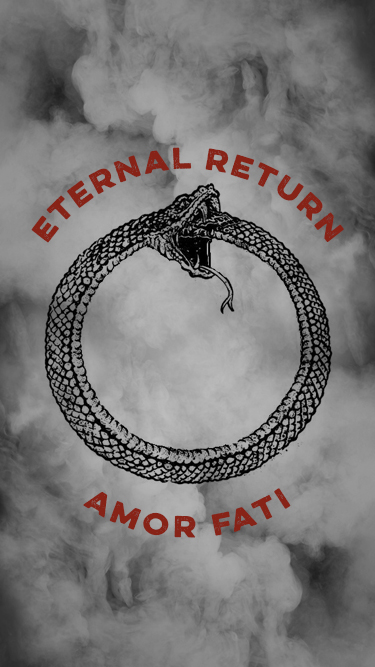
To remind yourself of eternal return throughout the day, download this free phone background image.
The trick is to keep this idea top-of-mind as often as possible. When you’re on a slow, contemplative walk, of course it’s easy to allow this type of idea in. But what about in the middle of a frustrating call? Or slogging through a boring task? Or, my worst nightmare and Achilles’ heel when it comes to composure, on the phone with a government entity (or, God forbid, an airline).
Having something external to trigger the reminder could be helpful. So could tying eternal recurrence to certain activities you do regularly. You could use morning commutes, waiting for someone to pick up a phone, visits to the restroom, and other routine, natural breaks to practice inhabiting the mindset of eternal return.
The more often you ask yourself, “If I was going to have to relive this moment for eternity, how would I do it?”, the more habitual the consideration will become. It’s a quick question, by the way. The instinctive new posture you take when you ask the question may be the only adjustment you need.
2. Gift It
Like we saw above, just bringing these ideas up with someone else can be invigorating. Having the idea exist between people makes it feel more real, more tangible. Ask the simple question: “Imagine that, when you died, you were born into this life you’re living now, and that you would repeat that forever. This moment and every other would happen again just as they have and will — and you’ll respond to them just as you have and will. How does that feel? What would you do differently?”
This is a shortcut to a great conversation and a way to strengthen your ideas around eternal return as well.
3. Levels of Repetition
Outside of constant reminders, you can take the time for a meditation on eternal return at different scopes: this moment, this week, this year, then your life as a whole. As you do this, different sections of your life might pop up: family, career, religion, creativity, interests, dreams, health, exercise, nutrition, etc. Consider the changes you’d make in these various areas of life if you were to live them over and over again. Consider the posture you’d maintain while making these changes. Consider the attitude you’d take towards the gap between where you are and where you want to be.
Different time frames and aspects of life will be more available than others. Stick with those for now. Maybe tomorrow a different time frame or aspect will come naturally.
This is something you can do in a single minute, zooming in and out through different timelines and noticing which areas of life pop up. It’s interesting to experiment with the time spent reflecting, as well. It’s worth spending five, ten, or even thirty minutes in this kind of extended meditation on eternal return.
Alternatively, you could turn it into a journaling exercise. I try to do stream-of-consciousness writing every morning, and every once in awhile, I’ll write through my thoughts about various levels of possible repetition. This takes slightly more dedication (you can’t do it while walking) and the mind is a bit restrained (by speed of writing and ability to put ideas into words), but it can be really powerful.
With any exercise like this, it’s usually best to start small. Start now for a minute, then return to it tomorrow or later today for five minutes. Slowly building can help us remain consistent, and consistency matters a lot here.
As you do these exercises, some areas will feel uncomfortable. Go further into those. I have yet to find an area without a path to improvement. Sometimes there’s nothing to do, at least not now. Instead, I find new possibilities in my posture toward certain situations. The mythologist Joseph Campbell talks about the discoveries we may make during these shifts in mindset:
“And where we had thought to find an abomination, we shall find a god; where we had thought to slay another, we shall slay ourselves; where we had thought to travel outward, we shall come to the center of our own existence; and where we had thought to be alone, we shall be with all the world.”
Campbell wasn’t talking about contemplating eternal recurrence, but he might as well have been. The transformations he describes resonate with what we find looking at our own lives through the lens of eternal return. Waiting in line becomes an opportunity for appreciating beauty in the ordinary, giving kindness, thinking through a problem, or maybe making plans to avoid these types of lines in the future. We can turn what was once a curse into a blessing. We can create light where there was once only dark. We can straighten our spine and find a new path. Or we may discover that the ugly view we once had had nothing to do with the path we were on, but that we were intent on looking at our feet as we walked it.
Eternal Return: The Ultimate New Year Resolution
If we are to love our fates — that is, love our lives — and not just accept them, then we must come to terms with the idea of eternal return. Are there aspects and moments of your life that you would change if you knew you were destined to repeat them on an infinite loop? If so, why keep living that way? If we were given the choice to be re-born into the same life again, we must be able to say, “Yes!” with enthusiasm.
Yes to the joyful and the difficult. Yes to the beautiful and the crude. Yes to the highs and the lows.
Yes not only to our lightest, happiest, and most cherished moments, but yes to defeat faced with resilience, betrayal followed with forgiveness, challenge embraced with relish.
Here’s to amor fati — to loving our fate, no matter what it brings.
Here’s to becoming a yea-sayer through and through!
What affirmation, what resolution could be more important or exhilarating? If last year was one you’d rather not repeat, how will you make this year one you’d love to experience for all eternity?
Listen to our podcast on Nietzsche’s life and work:
______________________
Kyle Eschenroeder is a writer and entrepreneur. He partnered with Art of Manliness to publish The Pocket Guide to Action: 116 Meditations on the Art of Doing. Once a week he sends out a letter with 5 important ideas; click here if you’d like to be included.



